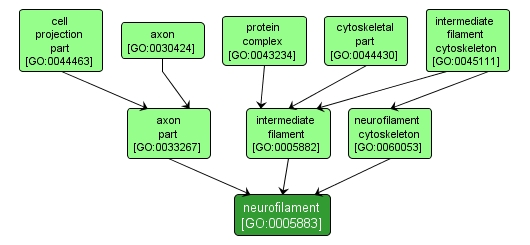| Desc: |
A type of intermediate filament found in the core of neuronal axons. Neurofilaments are heteropolymers composed of three type IV polypeptides: NF-L, NF-M, and NF-H (for low, middle, and high molecular weight). Neurofilaments are responsible for the radial growth of an axon and determine axonal diameter. |














